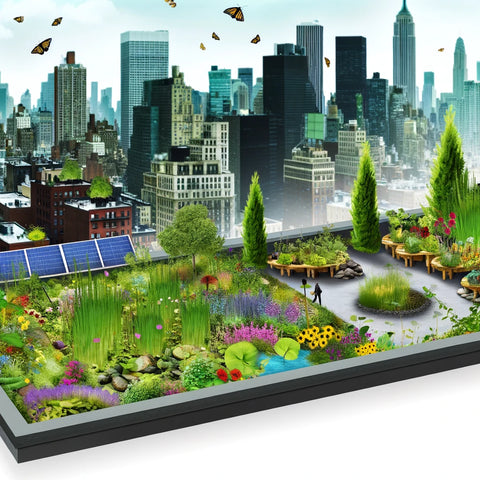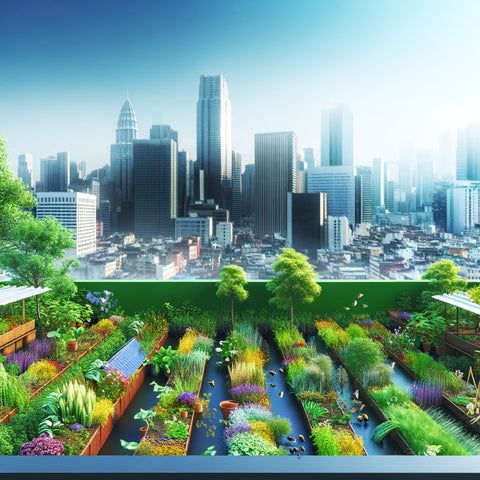The Importance of Urban Rooftop Gardens
Sky Gardens: Reviving Cities with Rooftop Green Spaces
Urban rooftop gardens are really remarkable examples of people's ingenuity and determination to find green spaces in the middle of urban sprawl. Beyond their aesthetic and recreational value, they play a significant role in reclaiming urban landscapes for the sake of sustainability, biodiversity, and community well-being. By transforming barren, unused spaces into flourishing ecosystems, I hoped to contribute to the betterment of Earth and its inhabitants when I initially began gardening on rooftops.
The first logistical challenge was to assess the building's structural soundness, get the required permissions, and design a garden that could thrive in the unique microclimate of roofs. There was a steep learning curve, but I appreciate the relationship between urban living and the natural world much more now.
The urban heat island effect is a big issue in many places because of the abundance of asphalt and concrete, and one of the many reasons why rooftop gardens are gaining popularity is to regulate stormwater runoff. The development of rainwater collecting systems turned a problem into a chance to irrigate plants with minimal impact on the city's water supply.
The choice of plants was critical. It was critical to select species that could withstand the extreme conditions found on rooftops. Nevertheless, diversity flourished in spite of these constraints. Bees, butterflies, and birds were among the pollinators attracted to the rooftop garden, which provided fresh fruit in the heart of the metropolis.

One of the greatest aspects is that urban rooftop gardening brings people together. It is possible that people would gather in these gardens to reconnect with nature and one other while also learning new things and exchanging ideas. Workshops on sustainable living, gardening clubs, and communal harvests brought together diverse groups of people who wanted to make their city a little greener.
The environmental effect is enormous, despite the problem's narrow scope. Plants grown on roofs contribute to cleaner air by absorbing carbon dioxide and other pollutants. Being naturally insulating and reducing heating and cooling demands, they minimize the building's entire carbon footprint. Every garden, no matter how tiny in comparison to a city, helps ensure a greener tomorrow.
We are witnessing a paradigm shift in our perception and interaction with urban life, and the term "urban rooftop gardens" is more than just a buzzword. It's a call to action for city dwellers to look up and consider the sky as a potential site for inspiring, environmentally conscious, and constructive architecture. As this movement grows and sows the seeds of change, it promises a future where cities are habitable in harmony with environment, not just livable.






Leave a comment